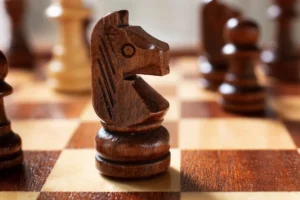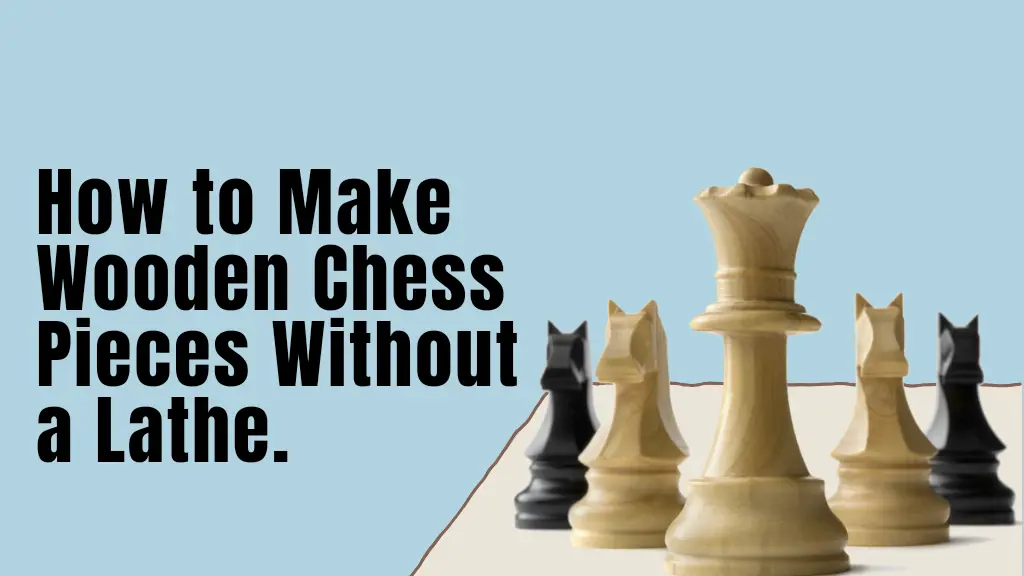Learn how to make wooden chess pieces without a lathe. Explore wood selection, carving techniques, and more in this comprehensive Do It Yourself guide.
Making Wooden Chess Pieces Without a Lathe

Chess is a game of strategy and intellect, and what better way to enhance your gaming experience than by crafting your wooden chess pieces? In this guide, we will take you through the process of creating unique and custom chess pieces without the need for a lathe. With a few essential tools and the right approach, you can fashion your own chess set that reflects your style and creativity.
Selecting the Right Wood:
The first step in crafting wooden chess pieces is selecting the appropriate wood. The choice of wood will greatly influence the appearance and feel of your chess set. If you want your chess pieces to be white, consider using woods like sapwood or oak, as they can provide a natural white colour. However, if you prefer a different colour, you can choose any wood and apply the desired finish later.
For black chess pieces, woods like red cedar or walnut are excellent choices. Red cedar offers a naturally dark tone, while professional wood carvers favor walnut for its rich color. So keep in mind that walnuts can be challenging to work with for beginners due to their hardness. Ebony, though expensive, is another option for luxurious black chess pieces.
Preparing to make wooden chess pieces without a lathe
Before diving into the carving process, ensure you have all the necessary tools on hand. The essential tools include a carving knife, drill press, circular saw, spray gun, and sandpaper. So gather the wood you’ll be using and cut it to the appropriate size, ensuring that each piece is uniform.
While cutting the wood, leave an additional 20% of the material on each piece’s size. You can refine the final dimensions as you work on them. Additionally, decide on the theme, size, and design for your chess pieces, ensuring that they maintain consistency within their respective categories, such as kings and queens.
Step By Step Guide to Make Wooden Chess Pieces Without a Lathe

Now, let’s delve into the process of carving the individual chess pieces.
Carving the Pawns:
-
Round the head of the pawn and narrow the other parts using push cuts. Use a spindle gouge for smoother curves and better control. Sand the piece thoroughly to achieve a polished, game-ready finish.
-
So, use top cuts to create deep lines between sections. This adds definition and character to each part of the piece. Ensure consistent depth and spacing for a clean, professional look.
-
To make carving easier, draw guidelines on the wood. These help maintain symmetry and accuracy throughout the turning process. Use a pencil for easy adjustments as you refine the design.
Shaping the Knights:
-
Begin by making the top and middle parts narrow at opposite sides, with the bottom being wider. This creates a balanced profile and a stable base. Use light, controlled cuts to maintain symmetry and avoid removing too much material.
-
So start shaping the head from one of the thicker sides. Use a spindle gouge for smooth curves and control as you define the head. Work slowly to ensure a rounded, even finish.
-
Add features like the horse’s mane by incorporating small details. Use a detail chisel or carving knife for precision. These fine touches bring character and realism to the finished piece.
-
Ensure symmetry in the knight’s design. Regularly rotate and inspect the piece from all angles as you work. Mark reference points to guide balanced carving on both sides.
Carving the Bishops:
- While bishops are relatively simpler to carve, envision the bishop’s appearance before starting. Sketch the outline or use a template to guide your shaping. This helps maintain proportions and achieve a clean, recognizable form.
- One crucial feature that distinguishes a bishop is the cut on the right side of its head, which sets it apart from other chess pieces.
Carving the Rooks:
-
Rooks are essential in chess and are relatively easy to carve. Focus on creating a cylindrical base with a castle-like top. Use precise cuts to shape the battlements evenly for a classic rook appearance.
-
So, create a large cube for the base and a smaller one on top, with minimal outlines in between. Keep the edges clean and sharp for a defined geometric look. This simple design works well for stylized or modern chess sets.
Crafting the King and Queen Pieces:
-
Begin with rounded edges for both the king and queen to prevent breakage. Gradually shape the crowns with controlled cuts to ensure symmetry. Use fine tools to add distinguishing details like the cross or points at the top.
-
-
-
For the king, narrow the wooden block from both sides, add a small crown, and carve a cross. Use a detail knife for the cross to ensure sharp, clean lines. Smooth the entire piece to highlight the regal features and ensure a balanced finish.
Conclusion:
Crafting your wooden chess pieces without a lathe allows you to infuse your unique style into your chess set. With the right wood selection, tools, and attention to detail, So you can create a beautiful and personalized chess set that will add an extra layer of enjoyment to your games. Start with simpler pieces if you’re a beginner, and as you gain confidence and skill, you can tackle more intricate designs. Happy crafting and playing!
FAQ’s
How long does it take to make wooden chess pieces without a lathe?
Answer: The time it takes to craft wooden chess pieces depends on your experience, the complexity of the design, and the tools you have. So on average, it may take several hours to a few days for a complete set.
Can I use any wood for carving chess pieces?
Answer: Yes, you can use various types of wood, but the choice should match your desired finish. Oak and sapwood are good for natural white pieces, while red cedar or walnuts are suitable for dark pieces. So choose wood based on your aesthetic preference and carving skill level.
What finishing should I use on my wooden chess pieces?
Answer: Beeswax is a popular choice for finishing wooden chess pieces as it provides a natural and protective layer. However, you can also use wood stains or varnishes to achieve a different look. The choice of finish depends on your preference for appearance and durability.




